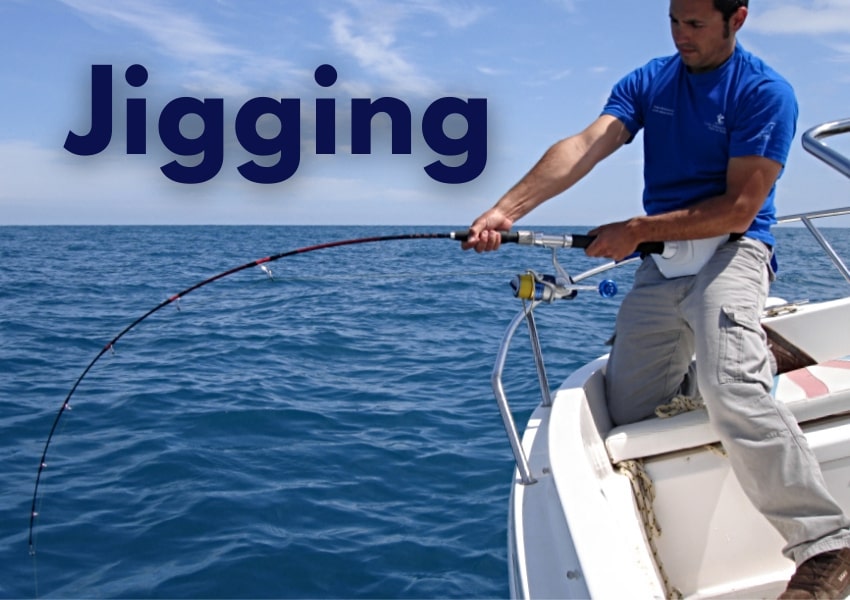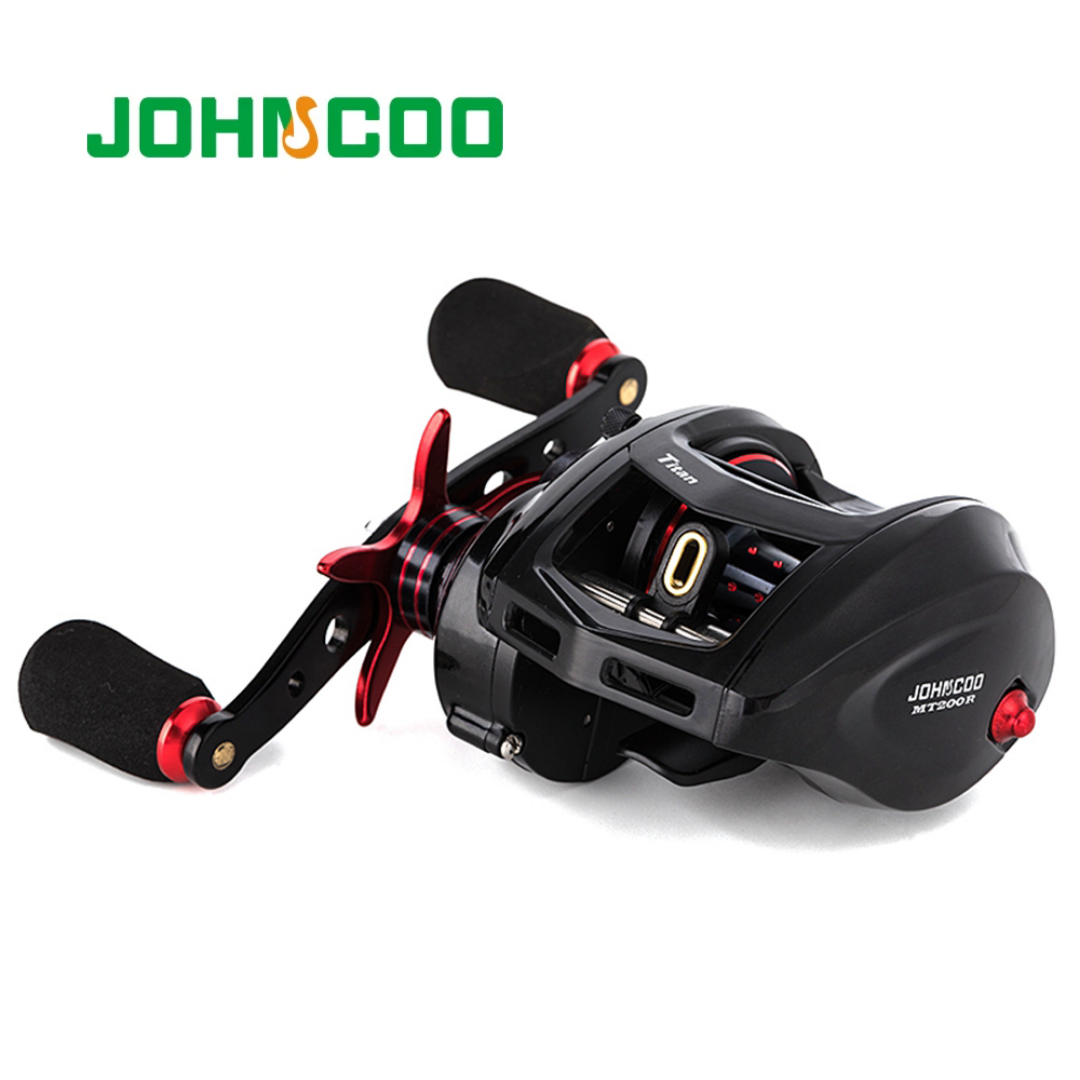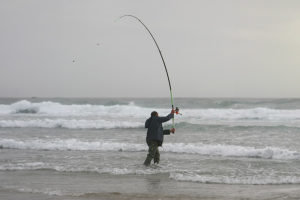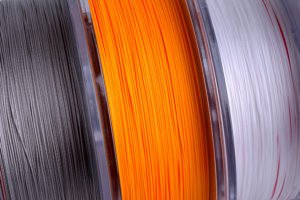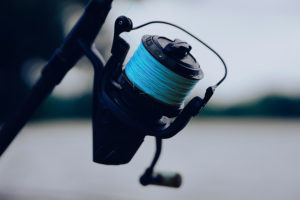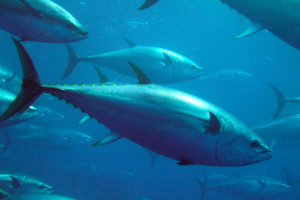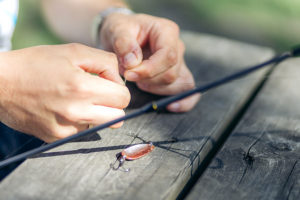El jigging se ha convertido estos últimos años en una de las modalidades estrella de la pesca deportiva en todo el mundo, aunque originariamente viene de Japón. Desde WeFish te contamos todo lo que necesitas saber para iniciarte en la pesca a jigging: Técnica, materiales, especies que capturar, consejos… ¡No te lo pierdas!
El nombre jigging surge de ‘jig’, los señuelos empleados para esta modalidad, que imitan el movimiento vertical de un pez cuando sube a la superficie (de ahí que también se le llame pesca vertical). Esta modalidad de pesca nos permitirá capturar gran cantidad y variedad de peces.
Material para la pesca a Jigging
El equipo habitual para la práctica de esta modalidad es un equipo ligero que se compone básicamente, de una caña, un carrete y una línea madre a la que va unido el jig. Bien es cierto que actualmente se están diseñando cañas y carretes específicos para cada submodalidad del jigging, por lo que cada equipo tendrá unas características particulares. La posibilidad de distintas combinaciones es muy amplia, pero veamos uno a uno cada componente.
Señuelos – Jigs de pesca
El jig consiste en un gancho (anzuelo) que puede ser de distintos materiales, siendo el más popular y efectivo el plomo, y de diferentes formas de pez. Actualmente la oferta es tan variada que se pueden adquirir infinidad de modelos y colores de cientos de fabricantes y marcas, además su elección dependerá por ejemplo de la submodalidad de jigging que vayamos a realizar, del peso de la especie a capturar, de la profundidad en la que trabajemos, del estado del mar…
Encontramos 2 tipos de jigs principalmente:
- Los jigs blandos están formados por un gran cabezal emplomado y un anzuelo simple en el que se une un pequeño cuerpo de silicona. Su movimiento es bastante realista y son muy efectivos para los peces que comen de forma lenta. En los fondos son menos efectivos porque bajan despacio y oponen mucha resistencia a las corrientes de agua.
- Los jigs duros (parecidos a un cuchillo) pueden ser largos o cortos y a diferencia de los blandos, bajan con rapidez y funcionan muy bien en las profundidades.
Un jig será más útil para pescar una especie u otra en función de la asimetría de su perfil y de la distribución de su peso (en la zona trasera o central). El peso, el cual afectará a la velocidad de caída del señuelo, varía según el modelo elegido pero suele estar entre los 60 y los 400 gramos.
Cañas
Teniendo en cuenta que esta modalidad se practica desde embarcación, el tamaño de la caña es muy importante. Las más habituales están entre 1,5 y 2,5 metros, con acciones comprendidas entre los 80 y los 250. Se recomiendan cañas de anillas invertidas o con forma de espiral. También han de ser ligeras (menos de 300 gramos) y de acción parabólica para facilitar los movimientos del señuelo, pero lo suficientemente resistentes y potentes como para levantar a grandes peces, un material óptimo es por ejemplo la fibra de carbono.
Carretes
La potencia y la comodidad en el momento de la recogida son imprescindibles en esta modalidad, de ahí la importancia de utilizar un buen carrete con un freno de calidad para poder graduar la recogida. Lo más apropiado es usar carretes de bobina giratoria con una relación de baja ratio (vueltas de carrete por cada giro de manivela), 4:1, 5:1 , para poder darle un movimiento adecuado al señuelo. Han de ser lo más ligeros y reducidos posibles pero con suficiente capacidad para albergar el hilo.
Hilo
Se recomienda utilizar líneas trenzadas de material acrílico, con una alta resistencia, escasa flexibilidad y poca fricción con el agua. Además de que sean finas para tener más sensibilidad. Las medidas recomendadas son de 0,35mm hasta 0,70 mm. Con un buen nudo de pesca se le añadirá en el extremo un monofilamento de fluorocarbono donde irá el señuelo.
Materiales recomendados por la comunidad WeFish:

¿Cómo realizar la pesca a Jigging?
Esta modalidad de pesca consiste básicamente en el uso de señuelos plomados desde embarcación que se dejan caer libremente al fondo marino. Tras esto, el pescador realiza recuperaciones del sedal a ritmo constante, a la vez que mueve la caña. El objetivo es simular el recorrido de un pez que huye a la superficie. Esto resulta sumamente atractivo para grandes depredadores y piezas de tamaños considerables.
El movimiento que se le da al señuelo variará en función de la profundidad del agua en la que estemos pescando, el tipo concreto de señuelo o la especie que queramos capturar. A veces también resulta eficaz el simple levantamiento del señuelo desde el fondo, dejándolo reposar en diferentes profundidades a fin de llamar la atención de nuestra presa. La velocidad de recogida será proporcional al tipo de pez y a sus hábitos de alimentación, así como de las corrientes existentes en la zona. Se recomienda comenzar con tirones largos, lentos y suaves desde el fondo e incrementar la fuerza y el ritmo conforme subimos.
Generalmente se practica en profundidades desde los 30 hasta los 250 metros por lo que necesitaremos de una embarcación, y en zonas donde haya diferencias notables de profundidades, mucha alimentación de peces pequeños y por tanto grandes depredadores esperando. Como los fondos accidentados por rocas o por acantilados, los arrecifes… Lo mejor será siempre alejarse a areas poco concurridas.
Los depredadores del fondo marino son la presa objetivo de esta modalidad, aunque las especies que se pueden pescar a jigging son muy variadas. Encontramos por ejemplo bancos de túnidos, lábridos o espáridos. Podemos pescar mero, llampuga, serviola, pargo, sama, dentón, jurel GT… Aunque nos centremos en este post en el jigging en agua salada, cabe mencionar que también se puede practicar en agua dulce y conseguir capturas de lucioperca, trucha, black bass o lucio.
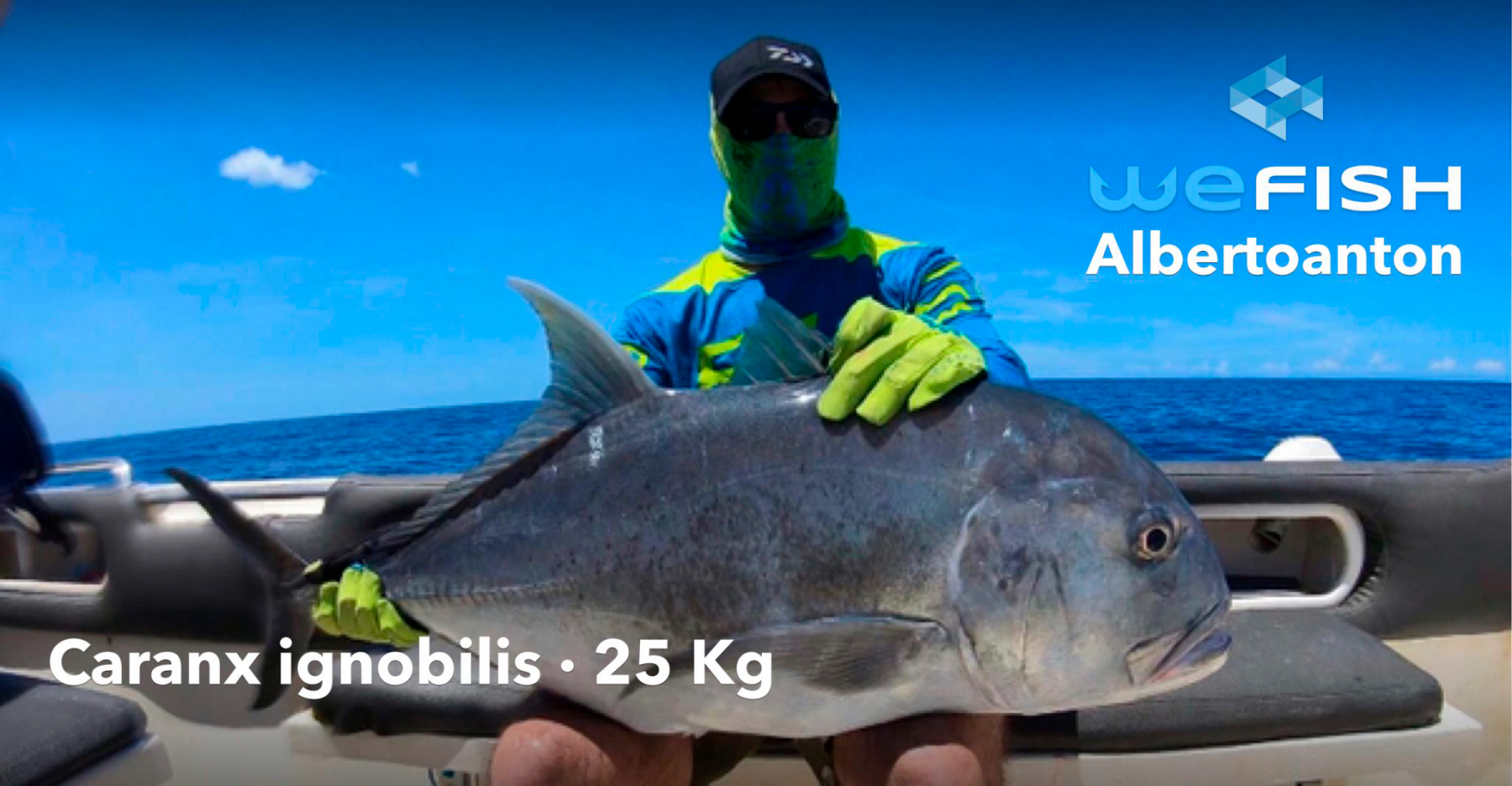
Submodalidades
El jigging ligero (light jigging) es una técnica atractiva y muy popular en los últimos años, además genera buenos resultados. Esta modalidad implica utilizar materiales más ligeros y jigs de pequeño tamaño y peso, facilitando la captura de las especies. Los peces bentónicos (aquellos muy ligados al fondo marino como el rodaballo, el lenguado, los rapes o diversas especies de rayas) rara vez abandonan estos fondos si las aguas se mantienen frías. Además, algunos peces pelágicos (los que se encuentran más cercanos a la superficie como los róbalos o los túnidos) descenderán a las profundidades en busca de alimento. Así y debido a la orografía de las costas españolas, el jigging ligero se convierte en una modalidad estrella para pescar en fondos de media profundidad o en fondos mixtos.
En esta submodalidad no se usan los típicos jigs pesados, sino jigs ligeros, rubber jigs e inchikus. El movimiento que le demos a estos señuelos no ha de ser rápido ni agresivo, como el de un jig, sino todo lo contrario. Lo habitual es hacer movimientos pausados para que se muevan de forma similar a cómo lo haría un pequeño cefalópodo que se desplaza cerca de fondo.
Cuando se realiza jigging desde costa estaremos hablando de Jig-Casting, una mezcla entre el spinning y el jigging, o de ‘Shore jigging’. En esta submodalidad de pesca se hacen largos lances y se recoge el señuelo como en la pesca a spinning, con movimientos de dientes de sierra.
El jigging orgánico o pesca al vivo es una variante del jigging en la que se utilizan señuelos naturales, vivos o no. Siendo lo más común el uso de cefalópodos o peces vivos unidos a piezas de plomo para que estos se sumerjan fácilmente y ayuden al pescador a realizar la técnica desde la superficie.
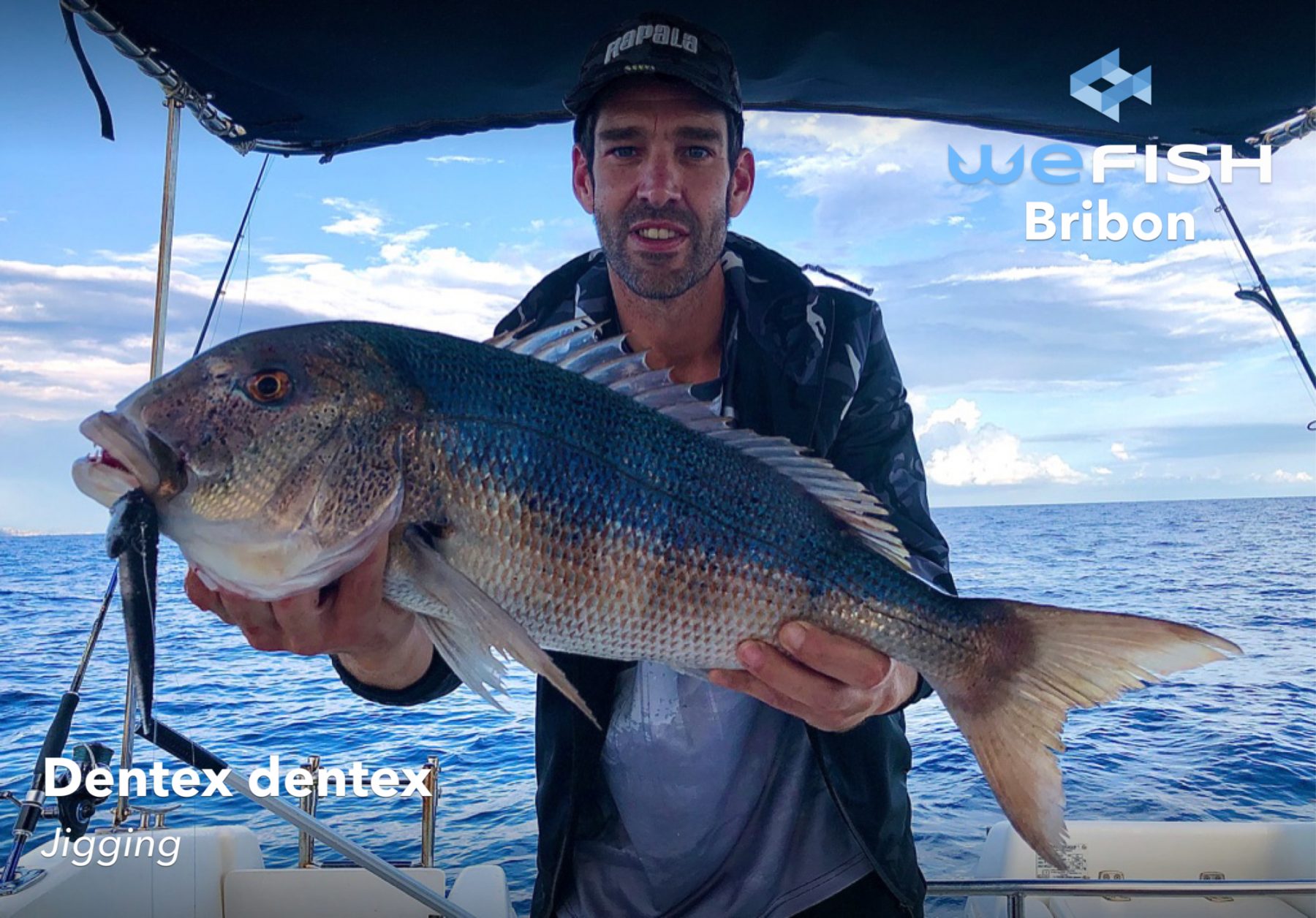
5 consejos para la pesca a jigging
- Conocer el fondo al que vas a lanzar es esencial así que visita lugares que ya conozcas o pide consejo a pescadores más avanzados en esta modalidad.
- Para cualquier modalidad de pesca es esencial planificar tu jornada antes de salir. En especial con el jigging deberás revisar la información meteorológica y elegir días con condiciones de viento y mar estables.
- Si eres principiante en esta modalidad, te recomendamos empezar con especies más pequeñas usando jigs ligeros (hasta 90 gramos). Conforme ganes experiencia y práctica podrás ir a por piezas más grandes.
- La forma física del pescador es importante para la pesca a Jigging, sobre todo si buscamos peces pesados. Es aconsejable utilizar cinturones de seguridad que ayuden a sujetar y tirar de la caña.
- El uso de una sonda o equipo de sondeo puede ser muy útil a la hora de detectar la la actividad de pesca existente bajo el barco.
Ahora que ya sabes cómo comenzar con el jigging, sube a una embarcación y adéntrate en las profundidades para practicar esta emocionante modalidad de pesca. Eso sí, no te olvides de planificar tu salida con WeFish antes de irte al mar, y de subir después todas las capturas que consigas ????.

